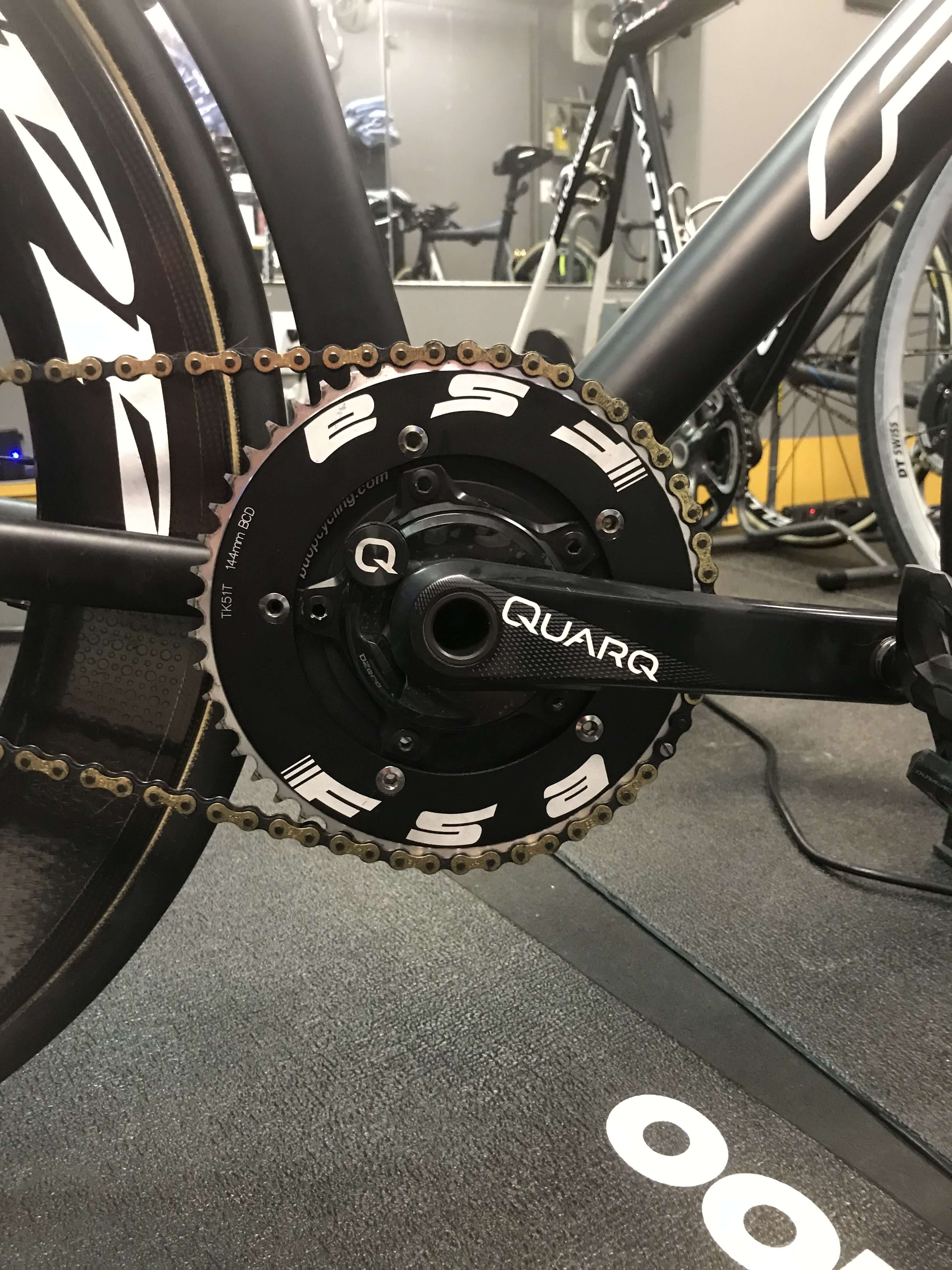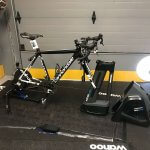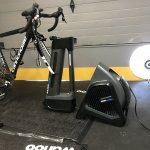
After the first day at the track, you will quickly learn that there is a whole new cycling vernacular. Are you running a 94″ gear, do you warm up with an 88”? Those numbers are terms just about the bike, never mind the stayer’s line, rail, and others. Being a roadie, I wanted to do roadie training. I wanted to know how to add a powermeter to my track bike.
Getting together the parts
The first thing about the track bike is that it does not run a standard 110 or 130 BCD spider, it’s a 144. Since I am a big fan of Quarq, I went to their website to find out which Quarq powermeter is track compatible. The answer, all of them, sort of.
Back to the BCD. Yes, you can get an array of 110 and 130 BDC chainrings but nothing like the 144 BCD chainrings. You could use a 110 BDC and have a few chainrings, but the selection of 144 is much greater. Quarq only has 110 / 130 BCD powermeters. SRM has a dedicated 144 BCD Track Cycling Powermeter, but again, my preference is Quarq.
After a phone call to Quarq in Spearfish, South Dakota, I learned about an adaptor sold by a 3rd party. The 3rd party adaptor converts a 110 to a 144 BCD. After a little research, I found the BDop Cycling 110 BCD to 144 BCD Track Adaptor for $69.99 plus shipping. I ordered two and waited, but not long. The adaptors left China on DHL and were here in Virginia in 4 days. The shipping was a bargain, only $15. With my Quarq 110 DZero in hand and the BDop Cycling adaptor, I went to work.
Trial and Error
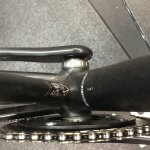
My first “glitch” was the proper size chainring bolts. Remember you are going to put the adaptor on the powermeter, so you need to have an additional five chainring bolts. On the 56 Felt FK2, I used the SRAM chainring bolts without any issues. On the 51 Felt, I used the Sugino 75 knurled track chainring bolts to secure the adaptor to the Quarq. Then I needed another five to secure the Chainring to the adaptor. Adding these bolts was a little more difficult, because of the thickness off the chainring and adaptor, did not allow the 5mm bolts for enough thread to secure the back. I needed a set of 8mm chainring bolts which Sugino makes.
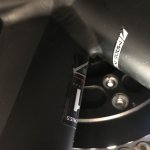
The first attempt at mounting the adaptors, I followed the instructions on BDops website. The video showed the adaptor mounted on the powermeter like a chainring and then the chainring on the adaptor. The issue was the chainline measurement was a little off and the chain did not fall directly on the sprocket and chainring. This resulted in an extremely loud drivetrain. I stopped by two bike shops and neither had a solution. After talking to a friend, Will Wong, I moved the adaptor inboard of the powermeter spider and then I mounted the chainring normally. This worked fantastic on the 56 Felt. I needed to do a little modification for the 51 Felt. I had to flip the adaptor so that the countersunk facing was toward the bottom bracket so that the back of the chainrings bolts went into the adaptor to clear the frame.
With the adaptor on, powermeter in place, I went to the track to collect data. This setup worked great. After my laps around the track, I can get data beyond, speed, cadence, and speed. If you are looking to add a powermeter to a track bike, I would highly recommend the Quarq/Bdop solution.

